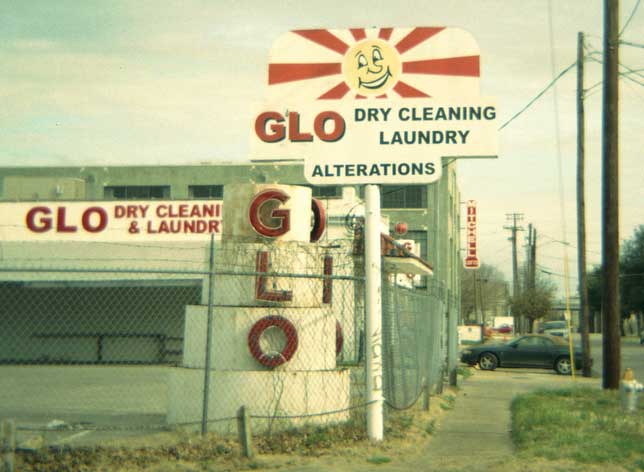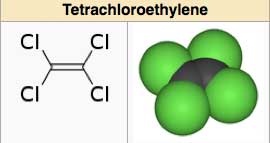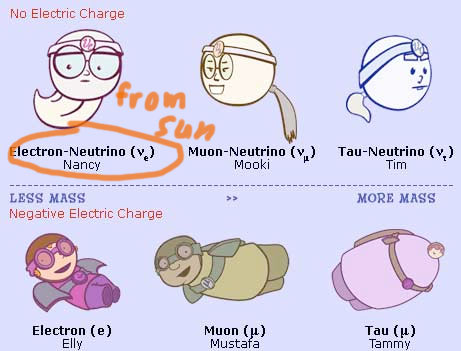
The solar neutrino problem
In the 1960's, John Bahcall had modelled the fusion reactions going on inside the sun to try and calculate the number of neutrinos that should be emitted.
Raymond Davis, Jr. set out to measure the number of neutrinos
Physics & dry cleaning

Davis placed a 100,000 gallon tank in the abandoned Homestake mine in South Dakota, and filled it with  tetrachloroethylene, a common dry cleaning solvent.
tetrachloroethylene, a common dry cleaning solvent.
$$\nu_e+{}^{37}Cl \to {}^{37}Ar+e^-$$ Very occasionally when chlorine is hit with a neutrino, it's absorbed, and then turns into argon. Davis collected the argon once a month and measured how much.
Bahcall's calculations: From the tank containing 600 tons of dry cleaning fluid, Davis should be finding 10 atoms of argon per week(!)
Davis found only 1/3 of the expected neutrino events.
But later, this result was eventually confirmed by the Sudbury Neutrino Observatory, the Kamiokande observatory (using different techniques) and others.
Apparently Bahcall's calculations and the experiments of Davis (and others) really were in disagreement.
But there are other neutrinos
The electron, muon, and tau particles are all Leptons:
- not made up of quarks,
- point particles,
- with a negative charge,
- don't respond to the strong force.
As if in parallel, there are three massless(?), neutral particles, the neutrinos:

The ones produced in the sun by fusion, according to Bahcall's calculations were all electron neutrinos. And the ones measured by Davis were all electron neutrinos.
In 1967, Bruno Pontecorvo proposed that the 3 neutrinos could undergo flavor oscillations: The probability to find a neutrino as an electron neutrino / muon neutrino / tau neutrino oscillates in time.
???
In terms of the dirac notation we've just developed, the electron-neutrino is an eigenstate of the "chlorine-tank-detector" detection operator, which only detects electron neutrinos: $$\hat{Cl}\ket{\nu_e}=\ket{\nu_e}; \ \ \hat{Cl}\ket{\nu_\tau}=\hat{Cl}\ket{\nu_\mu}=0$$
We could represent the situation as... $$\ket{\nu_e}=\begincv 1\\0\\0\endcv; \ket{\nu_\tau}=\begincv 0\\1\\0\endcv; \ket{\nu_\mu}=\begincv 0\\0\\1\endcv$$ With the "detection operator" represented by a matrix proportional to $$\hat{Cl}=\begincv 1& 0& 0\\ 0&0&0\\0&0&0\endcv$$
Pontecorvo's theory is that $\ket{\nu_e}$ is not an eigenstate of the Hamiltonian: Each neutrino is a different superposition of 3 eigenstates of the Hamiltonian with slightly different masses (and slightly different energies).
So, a particle which started out life (e.g. in the sun) at $t=0$ as an electron neutrino: $$\Psi(0)=\ket{\nu_e}=\begincv1\\0\\0\endcv$$ could then evolve in time according to the energies of the eigenstates of $\hat H$, such that $$\Psi(t)=\begincv f(t)\\g(t)\\h(g) \endcv.$$
Even if all the neutrinos from the sun are created as electron neutrinos, if the functions $f,g,h$ are all "fast" compared to the time it takes for a neutrino to cross the sun, then on average there will be just as many of each farther away from the sun: 1/3 of each.
$\Rightarrow$ Both Bahcall and Davis could be right!
Eventual experimental confirmation led to the 2002 Nobel price for Davis and Masatoshi Kobayashi.
See:
- solar neutrino problem (Wikipedia)
- Nova - The Ghost Particle